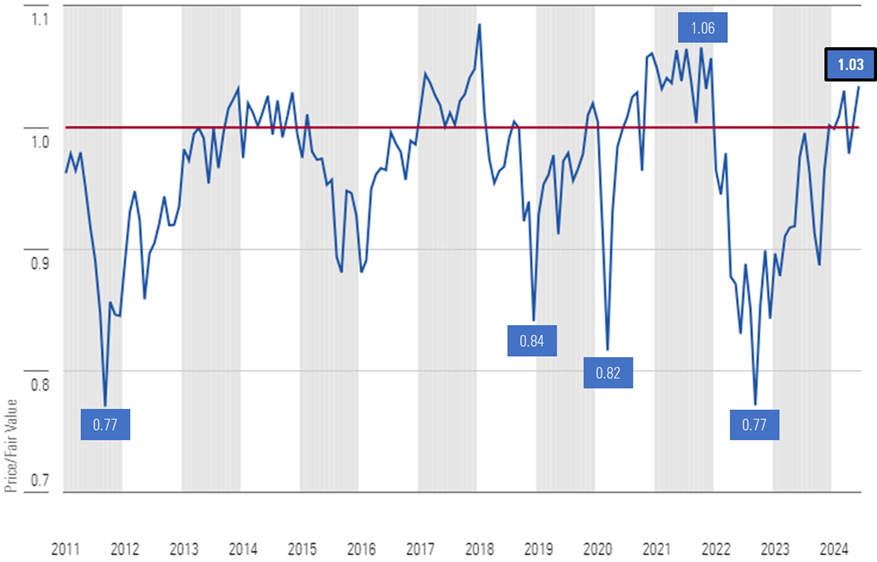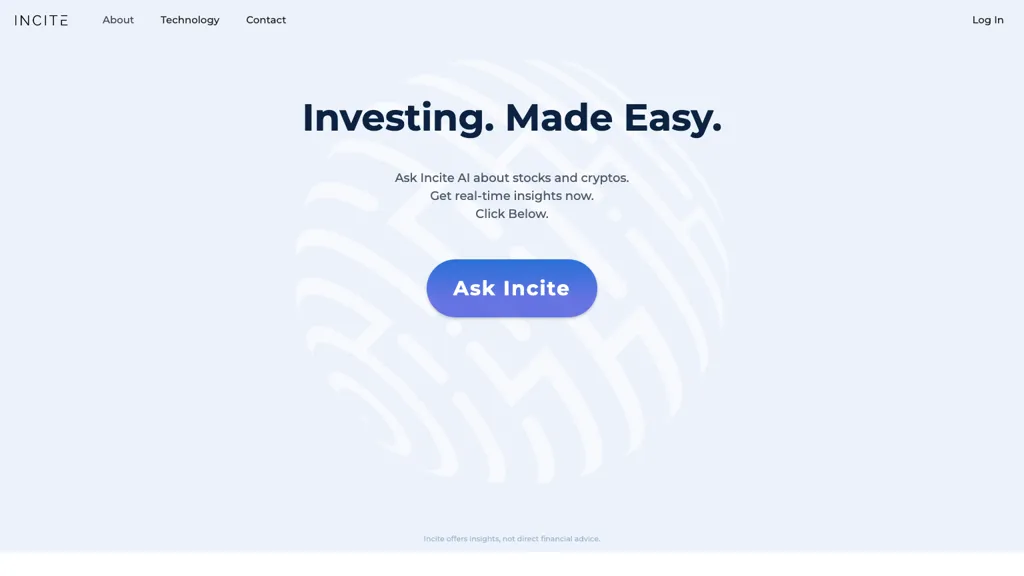To ensure that the tool you choose can provide reliable insights and forecasts, it is essential to evaluate its performance and accuracy. These are the top 10 ways to assess these platforms.
1. Backtesting Results
What to Look Out For Check if the program allows backtesting. This will let you evaluate the performance of predictions based on historic data.
Why It Matters : Backtesting is a way to test an AI model by comparing its predictions against actual results.
Search for platforms that permit you to customize backtesting parameters such as time periods and asset types.
2. Real-time Performance Tracking
What to look out for What happens to the platform under real-time conditions.
What's the difference? The performance of a platform in real time is much better than historical backtesting.
Utilize a free trial or demo account to observe and compare real-time predictions with actual market activity.
3. Prediction Error Metrics
What to be looking for: To measure the accuracy of your forecasts, look at measures like mean absolute error (MAE), root mean squared error (RMSE) and R-squared.
Why it is Important: The metrics measure the reliability of predictions compared with actual results.
Tip: Platforms which openly share their metrics tend to be more transparent and trustworthy.
4. The rate of winning and the success ratio
What to Look For: Check the platform's win rate (percentage of predictions that are correct) and success ratio (profitability of trading based on forecasts).
Why It Matters: A high win rate and success rate indicate higher predictability and profitability.
No system is perfect. Beware of sites with unrealistic winning rates, e.g. 90% %+),.
5. Benchmarking against Market Indices
What to Look For What to Look For: Compare the platform's forecasts and performance with major market indices (e.g., S&P 500, NASDAQ).
Why It Matters : This can help determine if a platform outperforming or is underperforming the general market.
Be sure to look for consistency in your performance, not just gains in a short period of time.
6. Consistency on Market Conditions
What to Look For What to Look For: Examine how the platform performs in different market conditions (bull markets or bear markets, high volatility).
Why it is important A strong platform works well in all markets, not just those that are in good conditions.
Try the platform's predictions in turbulent markets or during markets that are down.
7. Transparency in Methodology
What to Look For Know the AI algorithms and models that are that are used (e.g., neural networks and reinforcement learning).
Why It Matters : Transparency is important as it allows you to determine the scientific accuracy and reliability of the system.
Avoid platforms that employ a "black box" model without explanation of how predictions were generated.
8. User Reviews and Independent Tests
What to look for: Read user reviews and independent testing and third-party assessments.
What is important The independent reviews and tests provide unbiased insight into the accuracy of the platform and performance.
Review user comments on forums such as Reddit copyright and financial blogs.
9. Risk-Adjusted Returns
What to Watch for: Measure the platform's performance by using a risk-adjusted metric like Sharpe Ratio or Sortino Ratio.
Why it is Important: This metric accounts for the risk that is taken to achieve results. It gives the most complete picture of the performance.
Sharpe Ratio is an excellent indicator of returns adjusted for risk.
10. Long-term track record
What to Look For What to Look For: Examine the platform's performance over a long time (e.g. 3 to 5 years).
Why is it important Why it matters: Long-term performance is a more reliable indicator than short-term results.
Tip: Do not use platforms that show only short-term or selective results.
Bonus Tip Test using an account demo
Utilize a demo account, or a free trial to test the platform's predictions in real-time without risking real money. This will allow you to assess the accuracy and efficiency.
These tips will help you evaluate the reliability and performance AI platforms for stock prediction. This will help you to select a platform that is compatible with your trading goals and the risk you are willing to take. Be aware that no platform can be trusted, and using AI insights together with your own research is usually the most effective approach. Check out the top chatgpt copyright advice for blog recommendations including ai investment app, ai trading, ai investing platform, investment ai, market ai, investing ai, ai for trading, ai for stock predictions, trading with ai, options ai and more.

Top 10 Tips To Assess The Scalability Ai Analysis Of Trading Platforms And Stock Prediction
To make sure that AI-driven trading platforms and prediction systems can cope with the ever-growing volume of data, user demands and market complexity, it is vital to determine their capacity. Here are the top 10 suggestions on how to evaluate the scalability.
1. Evaluate Data Handling Capacity
Make sure that your platform can analyze and process large amounts of data.
Why? Scalable systems have to handle data volumes that are growing without performance degradation.
2. Test the Real-Time Processing Capabilities
Test the platform to see how it handles streams of data in real time for example, breaking news or stock price updates.
Why: The real-time analysis of trading decisions is crucial since delays can cause to you missing out on opportunities.
3. Cloud Infrastructure Elasticity and Check
TIP: Make sure your platform is cloud-based (e.g. AWS, Google Cloud or Azure) and has the ability to scale resources dynamically.
Cloud-based platforms offer flexibility. They allow the system to be scaled up or down according to demand.
4. Algorithm Efficiency
Tip : Check the computational effectiveness and accuracy of AI models for predictions.
Reason: Complex algorithms can be resource-intensive, therefore optimizing them is key to scaling.
5. Explore the possibilities of Parallel Processing and Distributed computing
Make sure the platform is using distributed computing or parallel computing frameworks.
Why: These technologies allow quicker data processing and analytics across multiple nodes.
6. Review API Integration and Interoperability
Test the integration capabilities of the platform with APIs that are external to the platform.
What's the reason? Seamless integration guarantees the platform can adapt to the changing information sources and environments for trading.
7. Analyze User Load Handling
To test the effectiveness of your platform, you can simulate high-volume traffic.
Why: The performance of a scalable platform should not be affected by the increase of users.
8. Examine the Retraining Model and its Adaptability
Tips: Check how often and effectively the AI models are being retrained using new data.
The reason is that markets are always changing, and models have to be able to change quickly to stay accurate.
9. Check Fault Tolerance (Fault Tolerance) and Redundancy
TIP: Ensure your platform is equipped with failover mechanisms that can handle software or hardware malfunctions.
The reason: Since downtime can be expensive in trading and trading, fault tolerance is essential to scalability.
10. Monitor Cost Efficiency
Review the costs associated with your platform which includes cloud resources, storage and computation power.
What is the reason? Scalability must come at a cost that is sustainable. This means that you must balance efficiency against cost.
Bonus Tip: Future-Proofing
Make sure the platform is able to incorporate new technologies (e.g. quantum computing and advanced NLP) and is able to adapt to regulatory changes.
If you focus on these factors it is possible to evaluate the scale of AI stock prediction and trading platforms, ensuring that they are reliable, efficient and ready for future expansion. View the most popular ai copyright signals recommendations for site info including free ai stock picker, how to use ai for stock trading, trading ai tool, ai copyright signals, ai copyright signals, chart ai trading, ai tools for trading, trading ai tool, ai stock prediction, free ai tool for stock market india and more.
